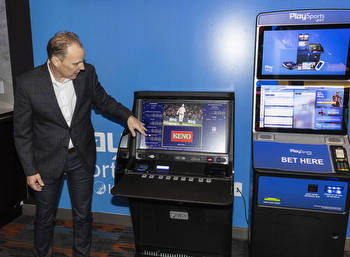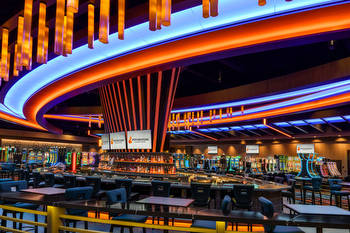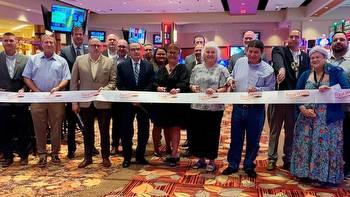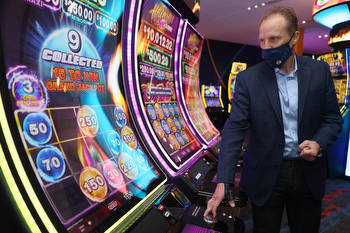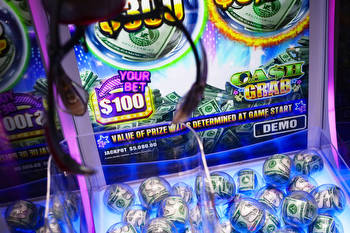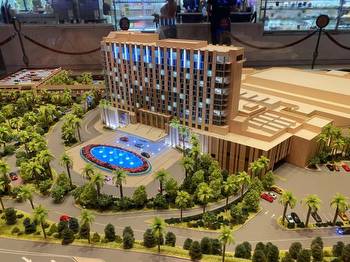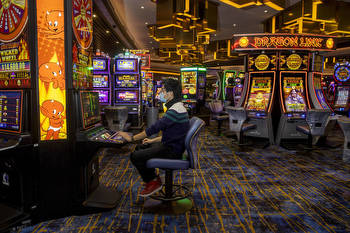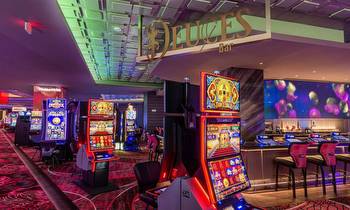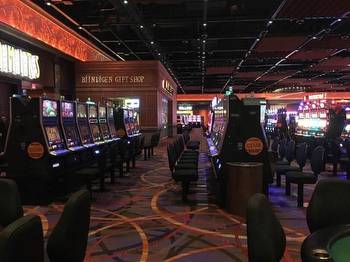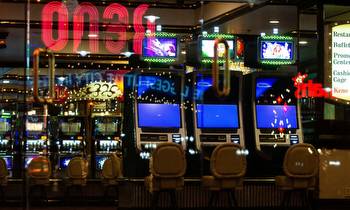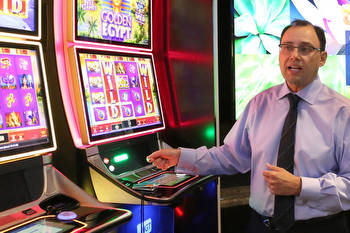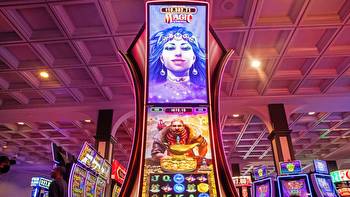slot players get more room on gaming floor
Gone are the days of a gambling hall lined with rows of small slot machines and players sitting shoulder-to-shoulder.
Now, the casino floor allows for players to stretch out a bit as they play the tall, vibrant slot machines with massive digital screens.
Changes to a casino floor’s layout started about 10 years ago and is now a common sight at Las Vegas casinos, particularly in the post-pandemic era. Some operators are finding that focusing on player comfort and slot technology is paying off, as gaming revenue reports show fewer machines on the floor are bringing in more money compared to 2019.
Mike Gatten, senior vice president of slot strategy at MGM Resorts International, credits new technology as the driving force behind the changes. In the past, both games and denomination options were limited. But the latest technology allows multi-game and multi-denomination functionality, allowing less machines on the floor and maximizing the space to add other amenities.
“Our gaming floors are much different than what guests experienced five or 10 years ago,” Gatten said in an email. “The advancements in technology that have allowed us to offer more games with less machines also have changed the slot machine’s profile. Guests will now see height and layers to a slot floor that feature video motion and color from a monitor — previously, that was created by neon lights and a rotating sign over a slot bank.”
Gatten said the push from consumers for new dining and entertainment experiences has also required more space.
“So, when the casino floor does not need as much of the space previously required, guests have the opportunity to enjoy those amenities only steps away from their favorite machine,” he said. “The physical shape of the floor not only changes, but it also allows us to develop new pathways and sightlines to highlight and make those new amenities more visible to our guests.”
Fewer machines, more money
Many casino operators’ new strategy can also be seen in the state’s gaming revenue numbers.
Clark County brought in $688.7 million in slot machine wins in August from 88,375 slot machine units. In August 2019, slot machine wins were reported to be $478.4 million from 103,260 slot machine units.
In the state, slot handle in August was 40 percent higher compared to August 2019, even though there were 123,300 units in August and 140,600 units in August 2019.
Industry members say the numbers show it’s likely a combination of factors proving that “less is more.”
Rahmi Chaghouri, director of operations at Circa, the D Las Vegas and Golden Gate casinos, points to advancements in slot technology from manufacturers — multiple lines of play, more multipliers and other progressives. Players can also have higher average bets and more games played per minute on improved machines.
“Slots and the technology have advanced that it’s created more ways for people to essentially win and also lose and to play a lot faster,” he said.
COVID-fueled changes
Charlie Lombardo, a retired Las Vegas gaming executive who now works as a consultant for Seminole Gaming and Hard Rock International, suspects the pandemic accelerated the casinos’ adoption of a new layout.
Faced with social-distancing requirements, after reopening from state-mandated public health closures in 2020, many operators took games off the floor to allow for at least 6 feet of space between players. That led to an increased “pod” configuration, where games are set up in a circle, triangle or football-like shape.
“What they found is that it made the casino much more comfortable and players enjoyed being separated a little bit — which we always knew, but most thought more was better,” Lombardo said. “I thought more wasn’t always better. I think everyone found less machines were more productive.”
It’s something even gaming manufacturers have noticed.
Nick Khin, IGT’s chief operating officer of gaming, said the London-based company’s customers are sharing feedback that indicates a turn away from straight banks.
“We’ve definitely seen that. I’m a player, too, and when I go to a casino and play, I don’t necessarily want to sit right next to somebody — especially if they’re smoking,” Khin said. “I think players’ preferences have definitely changed and definitely have changed since the pandemic. People are a little more mindful about social distancing and what-not. We’ve seen a lot of success with different configurations.”
Khin believes the rising popularity of electronic table games, also brought into the spotlight during the pandemic, has added to the changes.
Guests looking for more space away from others can now choose a pod- or stadium-style setup, instead of a table with a live dealer and possibly other players sitting next to them.
That’s led IGT to consider flexibility when doing research and development, he said. Game and machine designers consider how a casino may position a game, whether it be in a bank, up against the wall, in a pod or elsewhere.
Centering guest comfort
Despite the success of machines arranged in a pod-style post-pandemic, some casinos were incorporating the format long before COVID-19 arrived in the U.S.
Chaghouri said casino floors are generally designed based on the building’s available space and the infrastructure’s age.
The old-school mentality was that more slots meant more money, he said, but things changed when people considered the psychology of a customer’s choice.
“When you’re in the car, no one ever wants to sit in the middle,” Chaghouri said. “It’s kind of the same at a slot machine.”
The D Las Vegas began podding about six years ago when the team reduced the floor count of slot machines by about 150, he said.
They found that fewer games still yielded strong play.
“Any chance we can get to give people a bit more elbow room, we’re gonna do it,” he said. “More slots isn’t always the answer. If you have 4,000 slots on your floor and you’re only getting 100 people who play them, then what do you really need 4,000 slots for? It’s about getting the right utilization, the right mix and knowing what your customers want, what the hazards are and what slots they flock to.”
For MGM Resorts, that same philosophy guided its configuration changes, Gatten said.
If there are three machines in a row with the same game and the middle is receiving less play, then floor operators will reconfigure it into a pod so each player can have an “end” spot.
Guests also feel more comfortable when there are increased sightlines, Chaghouri said. As cabinets get taller, they could crowd the casino floor’s space and make it difficult to see across the room.
“If you’re looking across the casino, looking for a restaurant, looking for a restroom, looking for a store, a bar, as the slots get bigger, it’s tougher to see those types of things,” Chaghouri said. “By podding a slot up instead of making a wall of 10 of these things, it helps visually to increase sightlines and make it a little easier to peer across the casino and see where you’re going.”
However, industry leaders say the trend may be limited to Las Vegas. That’s because the area’s hypercompetitive market rarely results in full occupancy so reducing the number of games can have little impact. On the other hand, tribal and regional casinos need to maximize utilization, Lombardo said.
Gatten of MGM Resorts expects the strategy to stick around.
“Currently, the floors’ layouts are much more open, exciting and offer our players an opportunity that allows them to see and feel more activity around them during their gaming experience,” he said in the email. “The feedback we’ve received has been overwhelmingly positive, and this certainly was the push we needed to evolve our operations and adopt this new strategy at our properties.”
reviewjournal.com.. Distributed by Tribune Content Agency, LLC.











